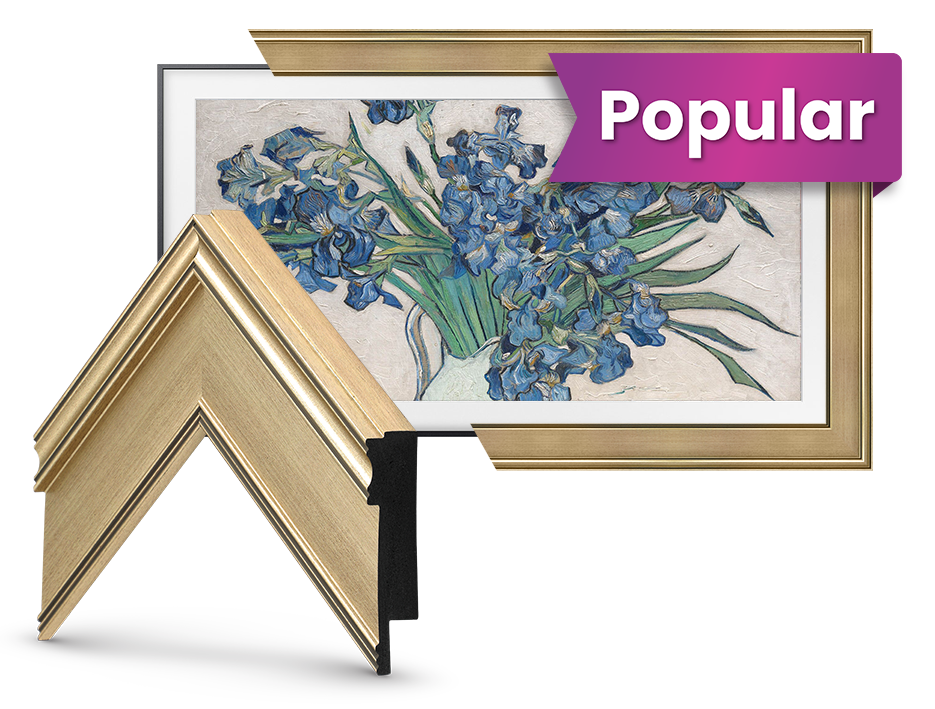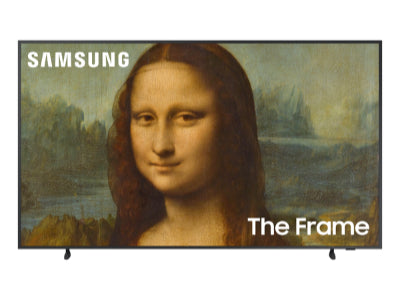Five Botanical Artists Who Created Timeless Art
Botanical art is where science meets beauty, a genre that turns plants into poetry and petals into brushstrokes.
For centuries, artists have been captivated by the natural world's intricate details, creating works of art that are both educational and breathtaking. But botanical art isn't just about pictures of pretty flowers — it's about capturing the soul of nature with precision and passion.
The artists who created these works were more than illustrators and educators, they were storytellers, explorers, and innovators who used their talents to document life in ways that brought these plants and flowers to life in ways that still resonate today.
The fascinating thing about botanical art is that it serves two purposes. On one hand, it's a scientific tool that helps people identify species, understand ecosystems, and preserve knowledge. It helped people "back home" see what plants, flowers, and animals in other countries looked like. People who may never leave their county or even city could see what flora and fauna in faraway lands look like.
On the other hand, it's a deeply emotional celebration of nature's fleeting beauty and its infinite complexity. The vibrant colors, delicate textures, and meticulous detail invite us to marvel at the world around us, to see the creatures and plant life we may never see in person. Whether it's a tropical orchid, a tree in Asia, or a humble weed, the work of these botanical artists reminds us that every leaf and petal has a story worth telling,
The problem is that many of these beautiful images can only be found on the different posters-for-sale websites and are not more readily available for us to admire and enjoy. So here are six we would like to introduce you to.
1. "Sour Cherry" - Maria Sibylla Merian (1713-1717)
Maria Sibylla Merian's "Sour Cherry" is more than a botanical illustration — it's a story that combines science and art. It features cherries bursting with color, surrounded by caterpillars and moths that dance across the page. (Although we're including this illustration in an article on botanical artists, I should point out that Merian is better known as a scientific illustrator of insects.)
This is an ecological narrative, not just a painting of a plant. Merian told stories, including Sour Cherry. The life cycle of these insects is documented alongside their host plant. Her use of vibrant hues and intricate textures draws us into the interplay between flora and fauna.
It's no surprise Merian became a pioneer in both entomology and botanical art. When she was a child, born in Frankfurt, Germany, in 1647, Merian raised silkworms and sketched their transformations.
By the time she moved to Amsterdam in 1690, she had divorced her husband and was supporting herself through her art. She made a groundbreaking expedition to Suriname in 1699, and her work there culminated in the book Metamorphosis Insectorum Surinamensium, a collection of engravings that revolutionized the scientific understanding of insect life cycles.
Merian was influenced by 17th-century Dutch still-life painting, which she adapted to her own scientific pursuits. She used hand-colored engravings to achieve depth and realism, often working from live specimens that she had collected herself.
"Sour Cherry," as well as her many other works, highlighted ecological relationships and bridged the gap between art and science.

2. "Les Roses" Series - Pierre-Joseph Redouté (circa 1817)
Pierre-Joseph Redouté's "Les Roses" series is considered the gold standard of botanical illustration and an ode to nature's most beloved flower. "Les Roses" shows off Redouté's mastery of watercolor and his ability to render lifelike and precise detail. The petals appear velvety, while the stems and leaves are textured and detailed. The compositions are elegant in their simplicity. A single rose is on the page, surrounded by botanical elements that complement its beauty but don't overshadow it.
Redouté moved from Belgium to Paris in 1782 and quickly became a favorite among the French aristocracy. He received patronage from Empress Joséphine Bonaparte, who gave him access to Château de Malmaison's extensive collection of exotic plants. His watercolors not only capture the ephemeral beauty of the flowers he portrayed, but they also contribute to scientific documentation and knowledge.
What makes "Les Roses" so extraordinary is its emotional resonance. The interplay of light and shadow gives each bloom a luminous quality, but it feels so timeless. Even today, the roses are as fresh and vibrant as they were when Redouté painted them. His shading techniques create depth and volume, which makes the roses look like you could just pluck them right off the page.
While Redouté's illustrations were celebrated for their beauty, they were also valuable references for botanists who studied plant biology. "Les Roses" helped establish the artist's reputation as the "Raphael of Flowers," which elevated botanical illustration to an art form in its own right.

3. "Ipomoea and Vavangue" - Marianne North (1883)
The full name is actually "Ipomoea and Vavangue with Mahé Harbour in the Distance," and it's one of over 800 botanical paintings that hang in Kew Gardens.
That is, 800 paintings painted by Marianne North.
North, who was born in England in 1830, defied societal norms by traveling extensively without a chaperone and documented plant life from nearly every continent. (To be clear, it was the traveling without a chaperone that was the defiant part, not the documenting plant life.)
Marianne North's 800 paintings are housed in the Marianne North Gallery at Kew Gardens in London, England . They reflect her unique approach of merging scientific accuracy with artistic flair.
Like most of her paintings (and her societal attitudes), "Ipomoea and Vavangue" defies the Victorian convention by painting plants in their natural habitats instead of isolating them against blank backgrounds. Compare this painting with some of the others you have seen in this article — the plant against a blank background. While Maria Merian might include insects in her paintings, North is unusual in that she included everything in the background in her paintings.
"Ipomoea and Vavangue" is typical of North's signature style: vibrant oil paints and a dynamic composition, blending botany with geography. In front, we see Ipomoea, a tropical vine with pink trumpet-shaped flowers intertwined with the fruit-bearing Vavangue tree. The greens and pinks contrast against the purple mountains and blue Mahé harbor in the background. It feels almost like we're hiding in the brush, spying on the boats in the harbor.
By including Mahé harbor in the background, complete with the boats, North wants us to consider the relationship between nature and human life — we're not viewing these plants in isolation or a vacuum, separated from the people who live nearby or even those who view it. Do the people in the boats even know about these plants? Have they seen the pink flowers or the blueberry-shaped fruit on the Vavangue tree? Are they even aware that we're watching them through the trees?
With "Ipomoea and Vavangue," North is showing us — reminding us — that every plant is part of a larger ecosystem and the world at large. And it's a snapshot of the tiny corner world at that exact moment. The plants, the boats, and even the people are all gone, and all we have is the moment that Marianne North captured in 1883 to tell us it ever existed.
4. "Prinos" - Georg Dionysius Ehret (1741)
Georg Dionysius Ehret's Prinos is more than a botanical illustration. It shows Ehret's genius in turning science into art. Ehret was born in Germany in 1708 and started his work as a gardener, but soon became the go-to artist for Europe's top botanists. His big break came when he began working with the "father of taxonomy," Carl Linnaeus, who asked him to help visually map the plant kingdom. Together, they created the visual language that's still used by botanists today.
"Prinos," which is a type of holly, shows a single branch that arches across the page, with waxy leaves, creamy blossoms, and red berries. But what makes it worthy of inclusion on our list?
Ehret used a technique called trompe l'oeil ("tromp loy"), which means "fool the eye." He uses extra details, like leaves casting shadows over other leaves, that make the flat painting look like it's a 3D image. A look so real that you have to resist the urge to try to pick it up.
Ehret also used watercolors on vellum (animal skin paper) to achieve the velvety textures. And the white background isn't just minimalism; it forces you to focus solely on the plant's anatomy. No frills, just flawless accuracy, just like Linnaeus preferred, but Ehret snuck his artistic techniques into the piece: shadows on the berries caused by an unseen light source or leaves overlapping one another. It's a reminder that even science can be beautiful.
While Marianne North's paintings let us see the world that surrounded the subjects of her paintings, Ehret and other botanical artists wanted us to focus only on the subject itself. (Personally, I like North's technique better, but I can't look away from Ehret's paintings either!)

5. "Lady's Slipper Orchid" — Franz Bauer (circa 1792 – 1817)
Let's go back to Kew Gardens, back before Marianne North's time, to 1790 when Franz Bauer became Kew Gardens' "botanical artist in residence." His job was to document Britain's growing collection of exotic plants.
Bauer's illustration of Lady's Slipper Orchid (Cypripedium calceolus) shows his unparalleled skill in combining scientific precision with aesthetic beauty. Created sometime between 1792 and 1817, the composition draws the eye to the orchid's distinctive slipper-shaped lip and its delicate shades of yellow that seem to glow against the white background. Bauer's mastery of color and form is also evident in the subtle gradations of green in the stem and leaves, which creates a sense of depth. Even the roots seem alive like they're seeking fertile soil.
What sets this painting apart from other botanical illustrations is Bauer's "microscopic" attention to detail. A fitting description when you consider Bauer wasn't just a botanical illustrator, he was a pioneering scientist whose artist's toolbox included microscopes.
Known as "Mr. Microscope" at Kew Gardens, Bauer merged art and science to revolutionize how plants were studied and depicted. Bauer dissected orchids, roses, and exotic species, isolating the petals, pollen, and reproductive organs. He transformed those observations into lifelike renderings and his studies of orchid pollen advanced botanical understanding of plant reproduction.
Bauer's Lady's Slipper Orchid helped set the stage for botanical illustration that came after him, bridging the gap between art and science. It not only preserves the beauty of a rare species, but it also serves as a record of botanical knowledge, useful to both scientists and art lovers alike.

Botanical art is more than just paintings of plants, it's a record of humans' fascination with the natural world. The artists we have discussed here didn't just paint what they saw, they poured their emotions and feelings into the work.
Through their paintings, we see more than just the anatomy of a flower, but its personality. The way it seeks the sun or opens after rain. And in Marianne North's case, we see the world around it.
The illustrations remind us that nature is both fragile and resilient. We see how easily the single plant can be crushed, but also see the way it seeks to continue to live on even after it has been destroyed.
Today, botanical art continues to inspire scientists, artists, and everyday nature loves. It invites us inside the plant's life, to look closer, and to literally see the plants, not just the garden. To study the leaves and seeds, not just the flower.
![]()












